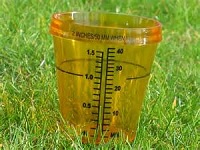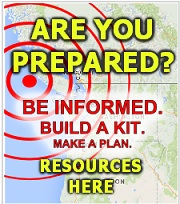
Waterwise Gardening: 10 Simple Ways to Save Water and Money this Summer
Landscapes add value, beauty and livability to our homes

|
With water use often doubling in the dry summer months due to outdoor watering, lawns and gardens also offer great potential to save time, money and water by making simple waterwise improvements. |
In the Portland area, we receive 90 percent of our rainfall October through May. That means we use the most water during the very same months that we get the least rain. Being efficient with your water use makes sound economic and environmental sense, and helps our region meet its long-term water supply needs.
Waterwise gardening doesn’t have to look like a typical southwest cactus and rock landscape. Rather, waterwise gardening practices that incorporate efficient watering tips can create beautiful landscapes that are multi-colored, vibrant and bountiful, even during the hottest summer days.
The Regional Water Providers Consortium—a group of 20+ local water providers and Metro—offers Wilkes East residents the following 10 tips for creating and maintaining waterwise landscapes.
- Adjust your sprinklers to water your lawn and garden, not the street or sidewalk.
- Water early in the morning (before 10 a.m.) or later in the evening (after 6 p.m.) when temperatures are cooler and evaporation is minimized.
- water established lawns about one inch per week (a bit more during hot, dry weather). Use a watering gauge or tuna can, along with a timer, to determine how long it takes your sprinkler to water one inch.
- Set it, but don’t forget it! Whether you have a manual sprinkler or an automatic system, adjust your watering throughout the summer to meet the needs of different plants and lawns. Check out the Weekly Watering Number at www.conserveh2o.org to see how much to water your plants and lawn each week.
- Inspect your overall sprinkler system for leaks, broken lines or blockage in the lines. A well-maintained system will save you money, water and time, as even small leaks can waste hundreds of gallons of water each month.
- Consider replacing some turf area with low-water plants and ornamental grasses. They are easier to maintain than turf, look beautiful and require far less water. Visit www.conserveh2o.org to download a free water-efficient plant guide.
- Group plants with similar watering needs. Creating “watering zones” in your garden will allow you to give each plant the water it requires—not too much or too little.
- Add a shut-off nozzle to your garden hose and save about five to seven gallons each minute your hose is on.
- Adjust your mower to a higher setting. A taller lawn provides shade to the roots and helps retain soil moisture, so your lawn requires less water.
- Apply only the amount of water your soil can absorb. Water thoroughly, but infrequently. If runoff or puddling occurs, reduce longer watering sessions into several short sessions. This will allow for water to more efficiently soak into the soil between each watering session.
|
For more tips to help you save water and money this summer, visit the Regional Water Providers Consortium at www.conserveh2o.org. About the Regional Water Providers Consortium Source: June 1, 2014 |
Regularly check your irrigation system for leaks. Even small leaks can waste hundreds of thousands of gallons of water a month.
|

















